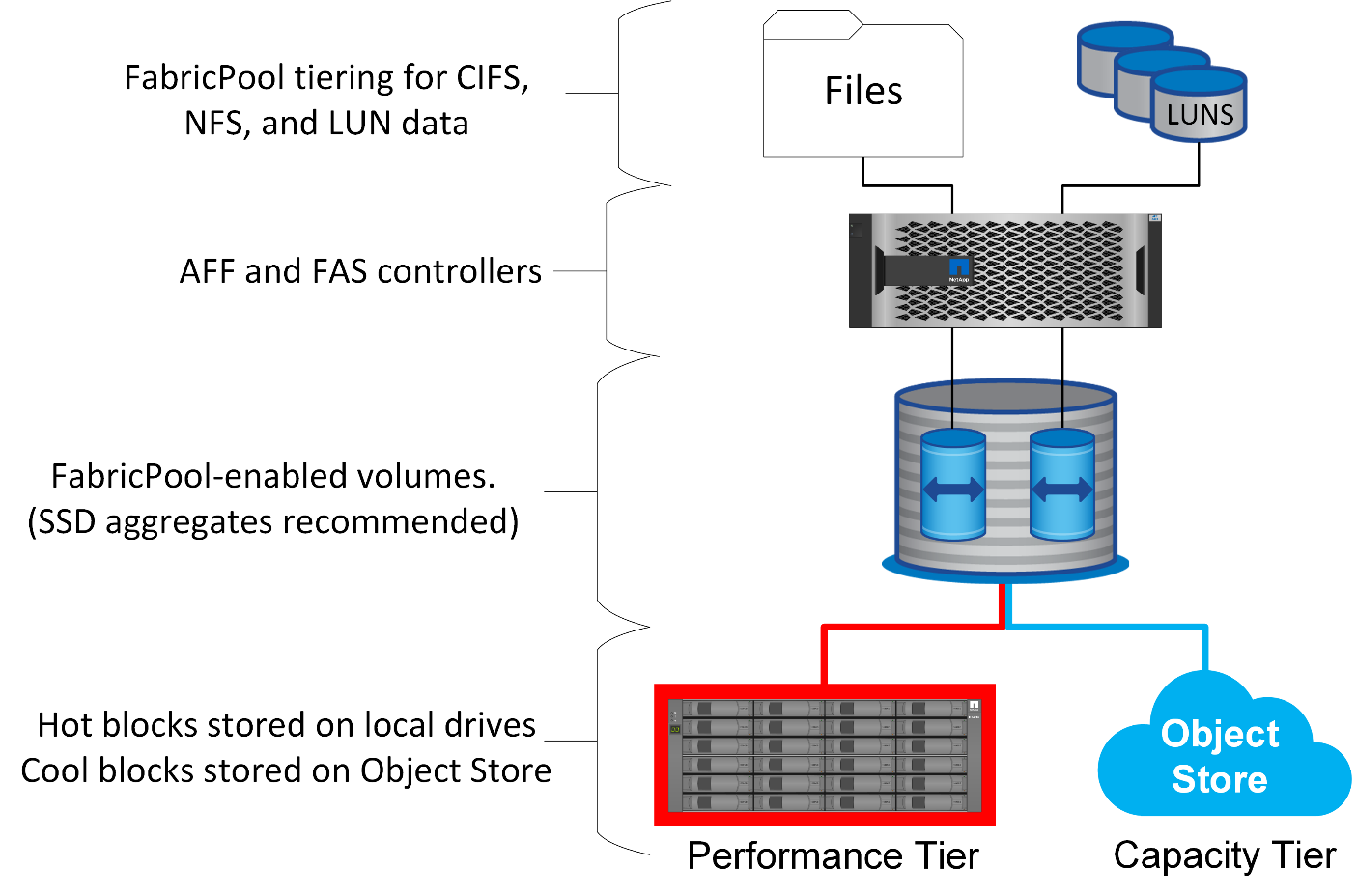Overview
 Suggest changes
Suggest changes


Understanding how FabricPool tiering affects Oracle and other databases requires an understanding of low-level FabricPool architecture.
Architecture
FabricPool is a tiering technology that classifies blocks as hot or cool and places them in the most appropriate tier of storage. The performance tier is most often located on SSD storage and hosts the hot data blocks. The capacity tier is located on an object store and hosts the cool data blocks. Object storage support includes NetApp StorageGRID, ONTAP S3, Microsoft Azure Blob storage, Alibaba Cloud Object Storage service, IBM Cloud Object Storage, Google Cloud storage, and Amazon AWS S3.
Multiple tiering policies are available that control how blocks are classified as hot or cool, and policies can be set on a per-volume basis and changed as required. Only the data blocks are moved between the performance and capacity tiers. The metadata that defines the LUN and file system structure always remains on the performance tier. As a result, management is centralized on ONTAP. Files and LUNs appear no different from data stored on any other ONTAP configuration. The NetApp AFF or FAS controller applies the defined policies to move data to the appropriate tier.

Object store providers
Object storage protocols use simple HTTP or HTTPS requests for storing large numbers of data objects. Access to the object storage must be reliable, because data access from ONTAP depends on prompt servicing of requests. Options include the Amazon S3 Standard and Infrequent Access options, and Microsoft Azure Hot and Cool Blob Storage, IBM Cloud, and Google Cloud. Archival options such as Amazon Glacier and Amazon Archive are not supported because the time required to retrieve data can exceed the tolerances of host operating systems and applications.
NetApp StorageGRID is also supported and is an optimal enterprise-class solution. It is a high-performance, scalable, and highly secure object storage system that can provide geographic redundancy for FabricPool data as well as other object store applications that are increasingly likely to be part of enterprise application environments.
StorageGRID can also reduce costs by avoiding the egress charges imposed by many public cloud providers for reading data back from their services.
Data and metadata
Note that the term "data" here applies to the actual data blocks, not the metadata. Only data blocks are tiered, while metadata remains in the performance tier. In addition, the status of a block as hot or cool is only affected by reading the actual data block. Simply reading the name, timestamp, or ownership metadata of a file does not affect the location of the underlying data blocks.
Backups
Although FabricPool can significantly reduce storage footprints, it is not by itself a backup solution. NetApp WAFL metadata always stays on the performance tier. If a catastrophic disaster destroys the performance tier, a new environment cannot be created using the data on the capacity tier because it contains no WAFL metadata.
FabricPool can, however, become part of a backup strategy. For example, FabricPool can be configured with NetApp SnapMirror replication technology. Each half of the mirror can have its own connection to an object storage target. The result is two independent copies of the data. The primary copy consists of the blocks on the performance tier and associated blocks in the capacity tier, and the replica is a second set of performance and capacity blocks.


